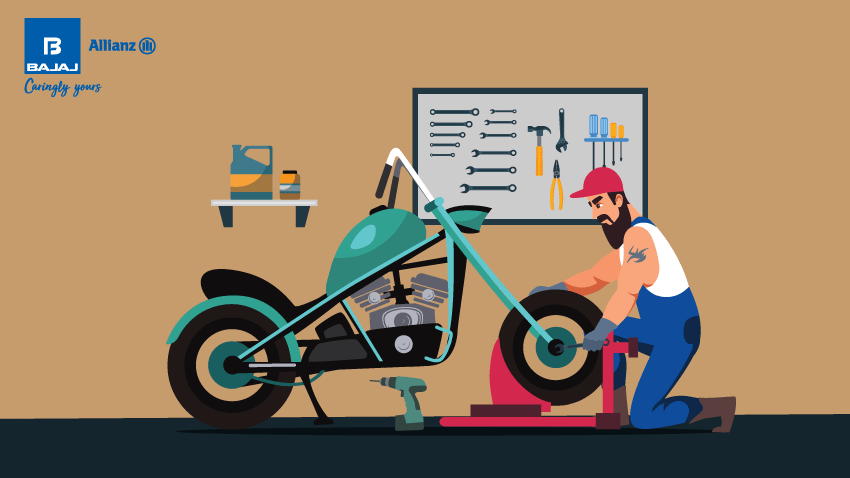Rainy weather brings its own set of challenges for vehicle owners. Whether you're wandering through city streets or cruising on highways, the monsoon season demands extra attention to vehicle maintenance and driving practices. This guide provides essential dos and don’ts for vehicle care during heavy rains, ensuring safety and prolonging the life of your vehicle.
Understanding the Importance of Vehicle Maintenance in Rainy Weather
Maintaining your vehicle becomes crucial during the monsoon. Rainy weather care is not just about keeping your vehicle looking good but ensuring it performs well under wet conditions. Regular checks and maintenance help avoid breakdowns and accidents, ensuring a smooth and safe driving experience.
Essential Weatherproofing Tips
As the monsoon season approaches, ensuring your vehicle is prepared to handle wet conditions is crucial. Here are essential weatherproofing tips to enhance safety and maintain your vehicle's interior and exterior throughout the heavy rains.
1. Check Your Tyres
Tyres are your vehicle’s first contact with the road. Ensure they have adequate tread depth and are free of cracks or bulges. This increases traction and reduces the chances of skidding on slippery roads.
2. Inspect Windshield Wipers
Visibility is critical in heavy rains. Replace any wipers that leave streaks or don’t clear the windshield effectively. Consider using windshield treatments to repel water and enhance visibility.
3. Protect the Interiors
Use waterproof mats and seat covers to protect the interior from getting damp. Placing silica gel packets inside the car can absorb excess moisture, keeping the interiors dry and preventing the growth of mold.
Preparing for Monsoon Driving
From ensuring proper visibility to protecting vital components, these steps will help keep you safe and your vehicle in peak condition during the wet season. Here's how to get started.
1. Lights Check
Ensure all lights, including headlights, tail lights, and indicators, are functioning properly to improve visibility. Use headlights even during daylight in heavy rain to make your vehicle more visible to others.
2. Brake System
The
brake system must be in top-notch condition. Check for any signs of wear and tear and ensure that the brakes respond well. This can be crucial in preventing accidents in wet conditions.
3. Undercarriage Care
Apply a protective coating to the undercarriage to prevent rust and damage from water, especially if you frequently drive through puddled roads.
Safe Driving Practices in Heavy Rains
Driving in heavy rains requires more than just good vehicle condition. Here are some key tips to ensure safety during monsoon driving:
1. Drive Slowly
Reduce your speed to maintain control and avoid hydroplaning. Remember, it takes longer to stop on a wet road.
2. Maintain Safe Distance
Keep a greater distance than usual between your vehicle and the one in front. This gives you ample time to react in case of sudden stops.
3. Avoid Standing Water
Driving through flooded areas can lead to severe vehicle damage, including engine hydrolock. Always try to avoid water that seems deeper than the bottom of your wheels.
4. Use Defoggers
Keep your windows clear. Using air conditioning or defoggers can help prevent the windows from fogging up, maintaining clear visibility.
5. Stay Calm in Hydroplaning
If you experience hydroplaning, remain calm, gently lift your foot from the accelerator, and steer in the direction you want to go. Avoid sudden braking or steering movements.
Vehicle Insurance: Your Safety Net in Monsoons
During the monsoon, it's vital to have comprehensive vehicle insurance. Here's why:
1. Coverage Against Natural Calamities
Comprehensive Vehicle Insurance covers damages due to natural disasters like floods and landslides, which are common in the monsoon.
2. Two-Wheeler Insurance
For two-wheeler owners, having an
insurance policy is crucial as bikes are more exposed to the elements. Ensure you have comprehensive
two-wheeler insurance that covers both natural calamities and accidents.
3. Third-party Car Insurance
While
third-party car insurance is mandatory, it does not cover damage to your vehicle. In monsoons, when the risk of accidents increases, having comprehensive coverage from companies like
Bajaj Allianz General Insurance Company becomes even more important.
Choosing the Right Insurance
Selecting the right
vehicle insurance is crucial, especially during the monsoon when the likelihood of water-related damage increases. Consider policies that offer add-ons like engine protection coverage, which protects against the common issue of water ingression—a frequent problem during
heavy rains. Additionally, choosing an insurer known for its efficient claims process and robust customer support is essential.
In Conclusion
Monsoon brings with it a romantic allure but also a set of challenges for vehicle owners. By following these dos and don'ts, you can ensure that your vehicle remains in top condition and you stay safe on the roads. Remember, the key to monsoon driving is preparedness and caution. With the right care and insurance, you can enjoy the rains without worry.
*Standard T&C Apply
*Insurance is the subject matter of solicitation. For more details on benefits, exclusions, limitations, terms and conditions, please read sales brochure/policy wording carefully before concluding a sale.
 Service Chat: +91 75072 45858
Service Chat: +91 75072 45858


